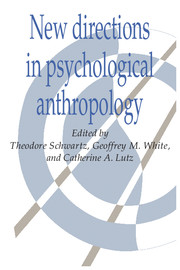Book contents
- Frontmatter
- Contents
- List of contributors
- Introduction
- I Cognition and social selves
- II Learning to be human
- 5 Language as tool in the socialization and apprehension of cultural meanings
- 6 Human development in psychological anthropology
- III The body's person
- IV Psychiatry and its contexts
- V Psychoanalytic approaches
- VI Disciplinary perspectives
- Index
5 - Language as tool in the socialization and apprehension of cultural meanings
Published online by Cambridge University Press: 05 June 2012
- Frontmatter
- Contents
- List of contributors
- Introduction
- I Cognition and social selves
- II Learning to be human
- 5 Language as tool in the socialization and apprehension of cultural meanings
- 6 Human development in psychological anthropology
- III The body's person
- IV Psychiatry and its contexts
- V Psychoanalytic approaches
- VI Disciplinary perspectives
- Index
Summary
Within anthropology there has been a long history of interest in language and communication as they relate to the processes by which children become full and competent participants in their culture. In his classic essay on language, for example, Sapir (1933/1949) asserted, “Language is a great force of socialization, perhaps the greatest that exists” (p. 15). Mead and Macgregor (1951) sought “those sequences in child–other behavior which carry the greatest communication weight and so are crucial for the development of each culturally regular character structure” (p. 27). H. Geertz (1959) conceived of emotional socialization as a communicative process whereby affective and interpersonal messages are transmitted to the child via verbal and nonverbal channels. Language and communication were thus seen as fundamental to the socialization process.
In recent years language has re-emerged as an important locus of inquiry in a number of anthropological enterprises – e.g., ethnopsychology (White, this book), the cross-cultural study of human development (Harkness, this book), cultural psychology (Shweder 1990) – that have an interest in childhood socialization. Part of the appeal has been that language, as both a publicly shared and privately utilized symbol system, crosscuts the internal/external dichotomy that has plagued discussions of culture. The ascendancy of language in socialization studies is perhaps most evident in the creation of a new field of study, language socialization, that is explicitly and focally concerned with language as tool and outcome of socialization, and in the revival of interest in Vygotskian theory, which defines socialization in terms of the joint participation of caregiver and novice in semiotically mediated routine practices.
- Type
- Chapter
- Information
- New Directions in Psychological Anthropology , pp. 83 - 101Publisher: Cambridge University PressPrint publication year: 1993
- 5
- Cited by



